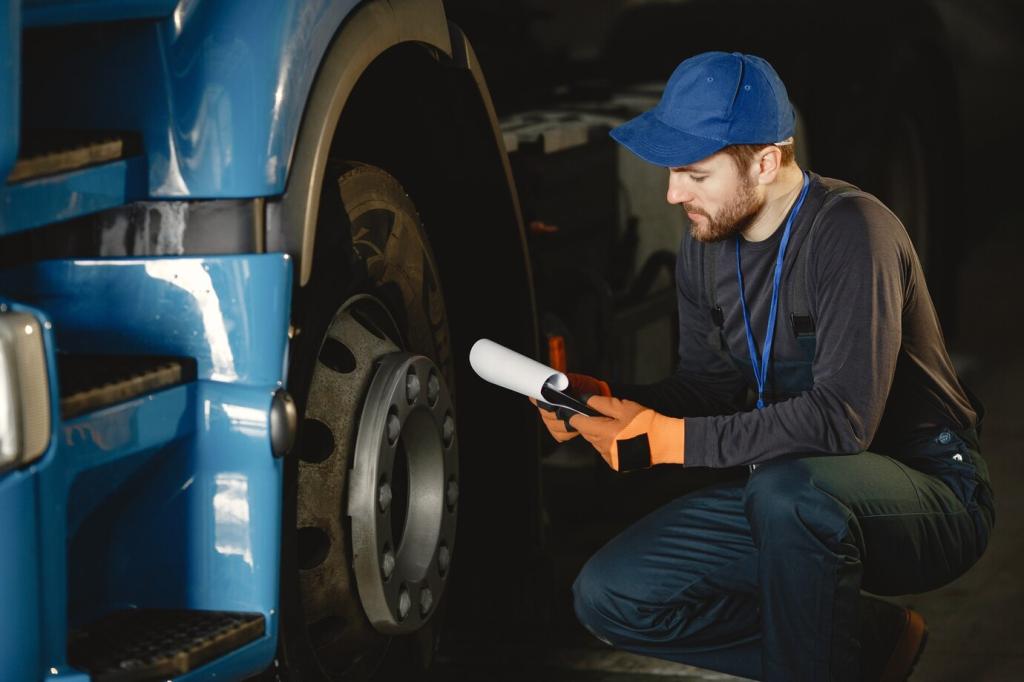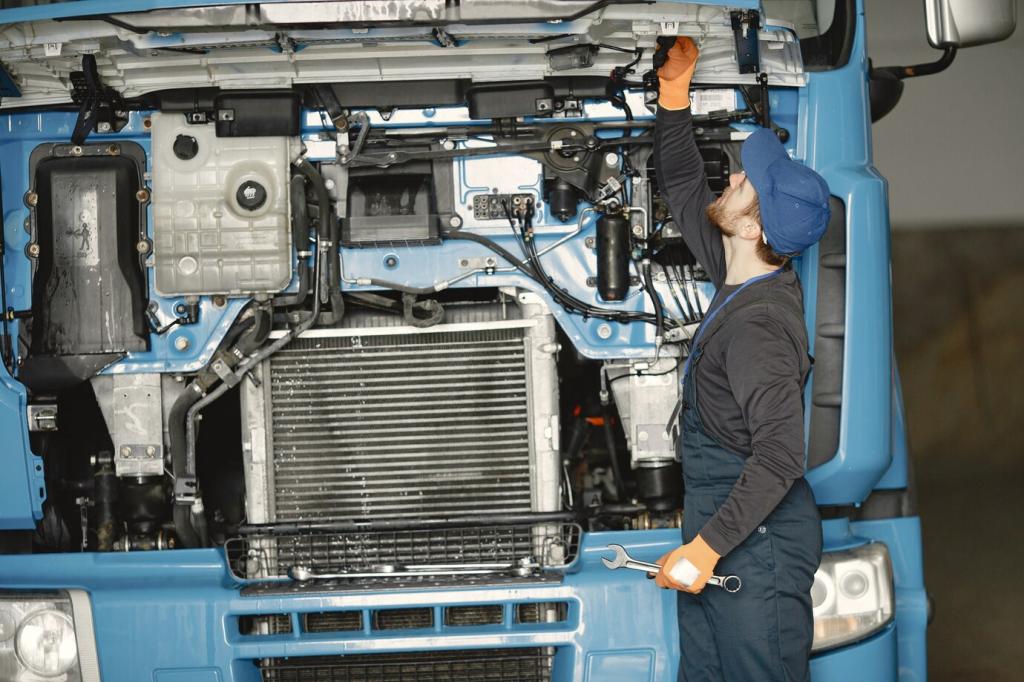Chosen theme: Step-by-step Brake System Repair for Fleet Vehicles. Welcome to a practical, road-tested guide designed for busy fleet managers and technicians who value safety, uptime, and consistency. Subscribe and share your questions so we can tailor future steps to your vehicles and routes.

Systematic Diagnosis: From Complaint to Cause
Ask when the noise occurs, at what speed, and under which loads or weather conditions. Record pedal sensations and pulling direction. Drivers know routes and habits; their details shrink your diagnostic tree. Encourage them to message patterns between dispatches so you can confirm repeatability.
Systematic Diagnosis: From Complaint to Cause
Reproduce the symptom with progressive stops: gentle, moderate, and hard braking. Note steering input, ABS activation, and yaw. Use a safe, consistent loop mirroring route grades and traffic. If possible, capture deceleration rates with a smartphone accelerometer and save baseline data for comparison.


Front and Rear Brake Inspection Essentials
Clean the hub face, torque lug nuts to spec with a cross pattern, and mount a dial indicator at the outer edge. Record runout and compare to service limits. Measure thickness variation at multiple points. Small deviations become big pulsations under load, especially on delivery routes with hills.
Look for glazing, heat checking, or lip formation on drums. Shoes that taper or discolor reveal failing return springs or seized adjusters. For box trucks with frequent stops, note hotspots at anchor pins. Document every abnormality to improve parts selection and preventive maintenance intervals.
Cracked hoses, swollen sections, or collapsed linings create mysterious pulls. Sticking slide pins mimic warped rotors and cause uneven pad wear. Replace fatigued hardware proactively; it costs little and safeguards the next set of pads. Tell us your preferred pin lube and why it survived last winter.
Hydraulics and ABS: Step-by-step Service
Master Cylinder and Lines
Inspect the booster-to-master interface for fluid trails. Bench-bleed replacements until consistent, bubble-free flow, then torque to spec. Trace hard lines for corrosion at clips and union joints. Replace suspect sections rather than patching. A solid foundation upstream prevents repeat comebacks downstream.
Caliper Overhaul and Lubrication
Retract pistons slowly, observing boot condition. Replace torn dust seals and pitted pistons. Clean bracket channels until pads slide freely, then apply thin, even high-temperature lubricant. Torque guide pins and bracket bolts correctly. This attention restores even clamping force and predictable pedal feel under load.
ABS Sensor Testing and Relearn
Check wheel speed sensor gaps with feeler gauges and remove ferrous debris from tone rings. Compare live data across wheels during a low-speed spin. After repairs, perform any required relearn procedures with a scan tool. A healthy ABS interprets traction faithfully, especially on wet loading docks.
Replacement and Machining: Doing It Right
Select formulations rated for high-temperature stability and low wear under heavy stop cycles. Avoid bargain compounds that crumble under heat. Pair pads with shims and clips engineered for the platform. Share your best pad-shoe combos for city vans, and we’ll compile a community-tested shortlist.

